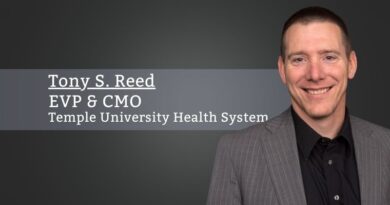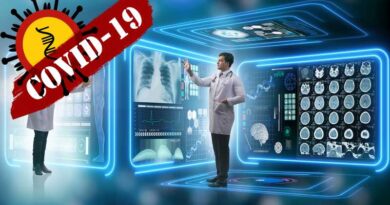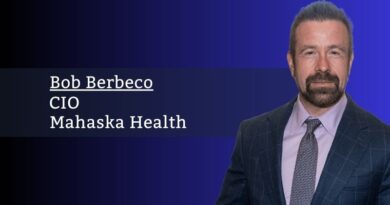Fast Following Amazon to the Patient-Centered Healthcare System
By Michael J. Hasselberg, PhD, RN, PMHNP-BC, Associate Professor, University of Rochester Medical Center

No one can argue that the future of healthcare is one in which the patient’s perspective, distinct experiences and opinions will increasingly drive how care is delivered. “Patient-centered” care is the very foundation of personalized medicine—i.e., medicine in which the right patient receives the right level of care, in the right place, at the right time.
Transforming healthcare to meet the patient-centered imperative—and to make that care accessible for all—will require a “fast follower” strategy whereby health systems adopt best practices for a consumer base that fundamentally knows what it wants, and is amenable and adaptable to a digital response to answer its needs. In the United States, Amazon has defined that strategy. Over the last decade, Amazon has upended the retail industry in ways that both acknowledge and significantly alter consumer behavior. Amazon’s perfection of eCommerce is a prime example of a consumer-centered paradigm that shifts the locus from brick-and-mortar to a digital-first marketplace.
Based on the “Amazon Effect,” consumers now expect retail shopping to deliver convenience, value, and positive consumer experience. Those same expectations will drive the patient-centered health system of the future.
At the University of Rochester Medical Center (URMC), we are “fast following” the Amazon example as we build our and our region’s roadmap for a digital-first, patient-centered health system.
The Right Patient
Today’s consumers are bombarded with information and options. Making choices in this new world can be overwhelming. Amazon has invested heavily in consumer data acquisition to learn what products their customers want even before those needs (and the consumer options for meeting them) are engaged.
At URMC, we are acquiring consumer data to know our patients better and predict their needs and preferences. This kind of proactive, patient-centered approach suits us well. As the birthplace of the Biopsychosocial Model, URMC has long made it a priority to discern our patients’ experiences to allow better, more responsive and holistic care. More recently, starting in 2015, URMC implemented a wide-scale patient-reported outcome data collection process that to date has amassed more than 2.6 million electronically-captured measures using our web-based platform (UR VOICE).
UR VOICE runs on tablets provided to URMC patients at time of their regularly scheduled office visits. As part of the check-in process, each patient completes a battery of patient-reported instruments attending to biological, psychological, and social dimensions of health, which generate a standardized T-score comparing their responses to the population mean. This enables continuous visibility of key indicators of a patient’s health and well-being that can serve as the driver of population health initiatives.
The Right Place
Convenient delivery—including immediate access, and products delivered to the doorstep—has been key to Amazon’s success. In healthcare, it’s not obvious how we’d replicate Amazon’s example. Generally, healthcare has required a delivery locale, which – especially for those in rural regions – may not be accessible, convenient, or even existent due to transportation barriers and/or uneven distributions of clinical providers.
At URMC, we are seeking to understand how social and other determinants impact our patients’ lives and abilities to receive convenient care at the right place. We have geocoded the residential address of every patient receiving care in our system to the block level. We have then aggregated our patient-reported outcome data with census (social, economic, housing, and demographic) data to provide map visualizations to inform the allocation of healthcare resources. These maps allow us to better target and deliver care to the patient instead of asking the patient to come to us for that care.
Right Time
As many of us know, Amazon is open 24 /7, and whether buying or returning a product, its eCommerce delivery network is nearly effortless. Consumers can shop with just one click of a button and can specify the right time for product delivery in weeks to days, or even hours. There is no need to find the time to pick up the product at the store; Amazon will ship it to you.
While illness never occurs at the right time—it comes when we’re too busy, or have others depending on us—at URMC, we believe that engaging the patient at the right time over the course of illness can make a tremendous impact. We are applying machine learning analytics to our patient-reported outcome data to allow us to intervene earlier in the course of patients’ illnesses, helping us to minimize the downstream negative sequelae of becoming ill. We’ve developed risk calculators in our electronic health record that serve as a virtual “check engine” light using the patient’s own data to predict outcomes. When a check engine light turns on, it reminds our providers to intervene at the right time with prevention strategies—allowing more patients to stay healthy at home and to avoid needing to come into the system for care.
Amazon has invested heavily in consumer data acquisition to learn what products their customers want even before those needs (and the consumer options for meeting them) are engaged.
Right Level of Care
Amazon understands the old saying that “one size does not fit all”. Twenty years ago, it started as a small e-commerce company in the online bookstore business, and has since evolved into one of the most influential cloud computing, digital streaming, and artificial intelligence companies of the modern day. Amazon has leveraged technology to provide consumers with multiple service options to make their lives easier.
In healthcare, consumer choice has traditionally been limited to options that exist within the walls of a hospital or outpatient clinic. Although this might be the right level of care for some patients, it is not for everyone. That is why URMC has developed alternative models and levels of care that deploy – alone, or ineffective combination – strategies including telehealth and telementoring, remote monitoring, smartphone mobile applications, and even augmented and virtual reality. Informed and empowered by patients’ own data, as described above, our menu of digital health options allows the URMC to offer our patients the right level of care, personalized to the right patient, in the right place, at the right time.



